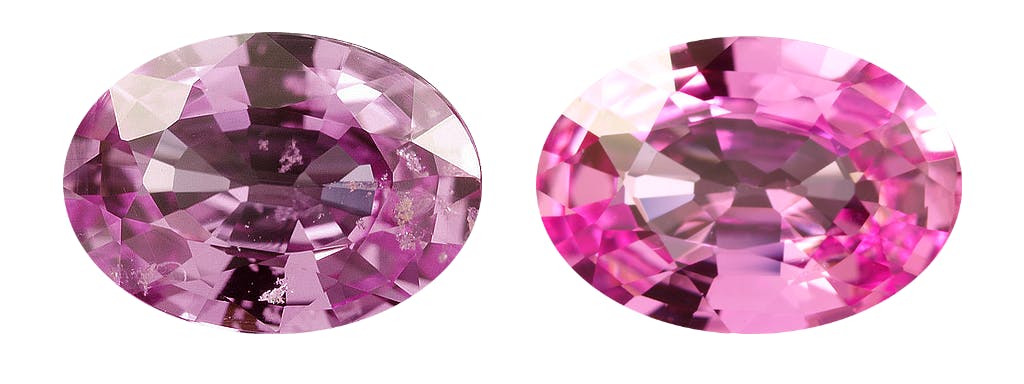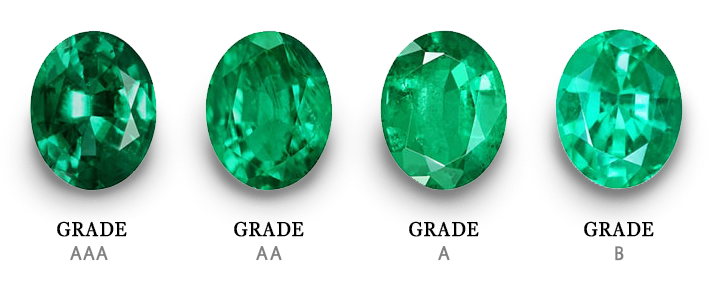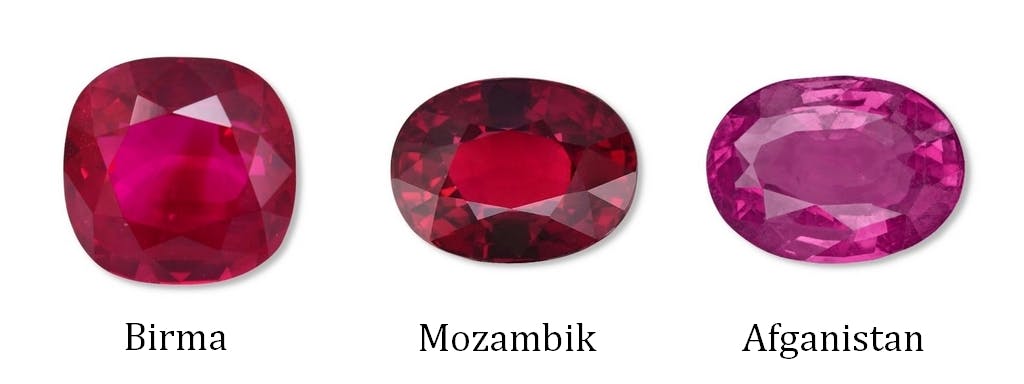Anyone who is even slightly interested in jewellery associates the value of gemstones with parameters such as weight, diameter, purity, colour and cut. The first two factors seem to have an obvious effect on the price. With the remaining factors, the matter is a bit more complicated.
The clarity and the price of gemstones
Purity depends on the clarity of the mineral. The impurities in the crystal can be of a chemical or mechanical nature, and any imperfection, even if it is only visible at 10x magnification, potentially lowers the value of the gem. The clarity of diamonds is expressed using a scale developed by the GIA.
Some believe that such a systematization should apply to all precious minerals. Sometimes I get inquiries from customers about the purity parameter of an emerald or ruby. However, in the case of coloured stones, the segmentation cannot be so restrictive. Why? This is due to the fact that the natural features found in stones such as sapphires, rubies and emeralds are desirable. They testify to the naturalness and origin of a given gem, and this, in turn, is reflected by the price. In today's times of counterfeiting everything, there is always an increased risk of manipulation with magnifying-clean stones. Many collectors and traders have gone bankrupt on too clean stones, bought too cheaply. Meanwhile, when a stone, taken under a microscope, can tell its story, it is much more valuable than a mineral that lacks such a "record".

Is colour a matter of taste?
It might seem that the colour of a gemstones is a matter of taste. Nothing could be further from the truth. For example, rubies are usually pinkish-red or beetroot in colour. Unless they are artificially modified, they get quite high prices. However, in the case of Burmese rubies in shades of blood-red, prices can be sky-high and reach five-digit sums (in US dollars) per carat. As you can see, the colour of the mineral has a significant impact on the price due to its saturation and rarity. How can you determine which colour is the most sought-after? Each type of gemstone has its own factors. However, a uniform colour without streaks and deep saturation usually proves a high value.

What about the cut?
The cut and proportion are another factor that influences the value of a stone. A properly cut stone reflects light like a mirror, exposing all its facets. Unfortunately, grinders usually work under pressure to cut stones in such a way as to maintain the highest possible weight, sometimes at the expense of proportion and brilliance. Under the influence of such actions, it is difficult to find gems cut to the highest standard - and if you are fortunate enough to find one, such specimens reach dizzying prices. Often, after consulting with a client, I buy a stone that needs to be improved. This is a very good move, because at the cost of a slight loss of mass, the stone regains its unique shine.

Origin
How, then, should you evaluate the above-mentioned factors that ultimately determine the value of the stone? While weight and dimensions are not difficult to verify, the ability to recognize purity, colour and grind requires a trained eye and specialized equipment. Therefore, it is usually based on certificates issued by professionals. However, the certificate rarely contains the information that has the greatest impact on all parameters of the mineral, especially with coloured stones. It's about the origin of the gem.
For example, it is common for top-class gemstones of a given type to come from only one place on Earth. Often even from one specific mine, where the most favourable geological conditions prevailed. Ironically, places such as Burma, Colombia, Thailand and Cambodia where world-class minerals are mined are either armed or so remote from civilization that extreme climatic factors and distances pose enormous logistical challenges.

It always starts with a many desperate people willing to risk their lives to make a fortune. Of course, most fail, but if we've seen just one episode of Ice Road Truckers on the History Channel, we have probably seen multi-tonne equipment being transported across the surface of frozen lakes from the continental US, all the way to Alaska - to the diamond mines. Somehow this business must be worth it. The recipe is simple: the cost of mining and the origin are added to the price of the stone. On the other hand, where military operations are carried out, one has to add the cost of smuggling and circumventing the restrictions imposed by states.
Some may often feel that gemstones are too highly valued. Then it is worth considering the route that each such stone must take from its creation tens of thousands of years ago to its being discovered deep underground. From mining it - to polishing it and putting it up for sale. From a trip around the world to a jewellery workshop, where it is delicately framed in precious gold. In any case, the gemstone is the culmination of a unique, long history that ultimately comes at a price.
